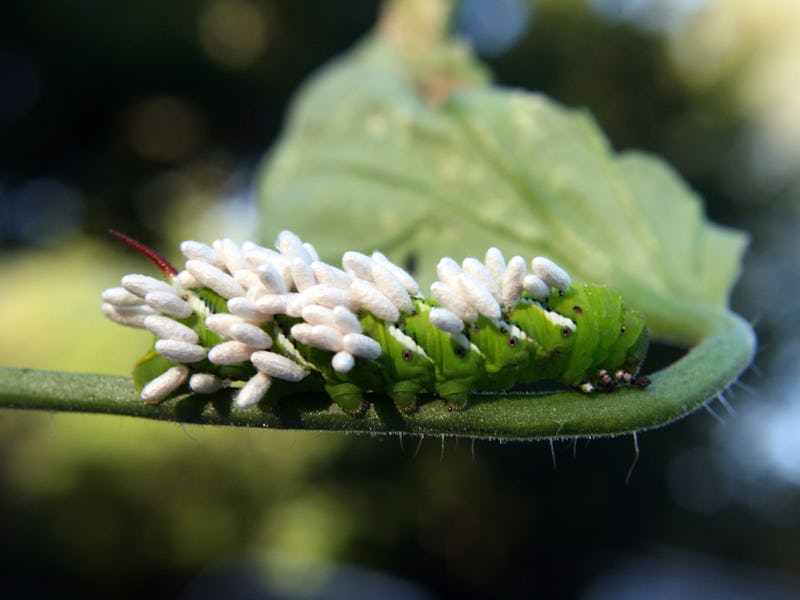Scientists Want to Lure Wasps Back to Farms -- as Pesticide Alternatives
Release the infochemicals.

The smell of fresh-cut grass smell is lovely.
It’s also the smell of millions of plant voices crying out as one, in the hope that a predatory bug will come save them. The chemicals, evolutionary holdovers from the time before John Deere, are thought to work by luring wasps and other carnivores to swoop in on the herbivorous bugs munching their way through lawns. But we’ve bred the chemical scream out of our agricultural crops, and a team of Mexican and Swedish biologists say it’s time to bring these smells back.
A form of biocontrol, the scientists want to take the principles behind lady bugs massacring aphids in backyard gardens and blow it up on an agricultural scale.
The Braconid wasp, for instance, lays its eggs on tobacco hornworms, and the wee wasps devour the pests from the inside out. When you try that in big farms, you run into problems of scale, as the scientists lay out in an article published Sunday in the journal Trends in Plant Science: Wasps and other insect carnivores might leave the farm for greener pastures, or they’ll die off as soon as they eat all the pests. (Certain wild plants produce nectar to keep the carnivores happy when there’s no six-legged food around.)
However, if farmers release these so-called infochemicals in an artificial dispenser — plus offering food and shelter to the carnivores when there aren’t any pests — we might be able to harness the bug-eaters’ natural inclination to keep such prey species in check. Alternatively, the scientists say, you could attempt to bring these scents back through genetic modification, though it requires the interplay of several genes.
Rewarding grub-killing wasps for visiting our farms won’t be the only solution to reducing the pressure pesticides put on the environment (for the victims of too much anti-pest chemical warfare, look no further than the monarch butterfly).
But we’ll get that fresh-cut smell for our soybean fields.